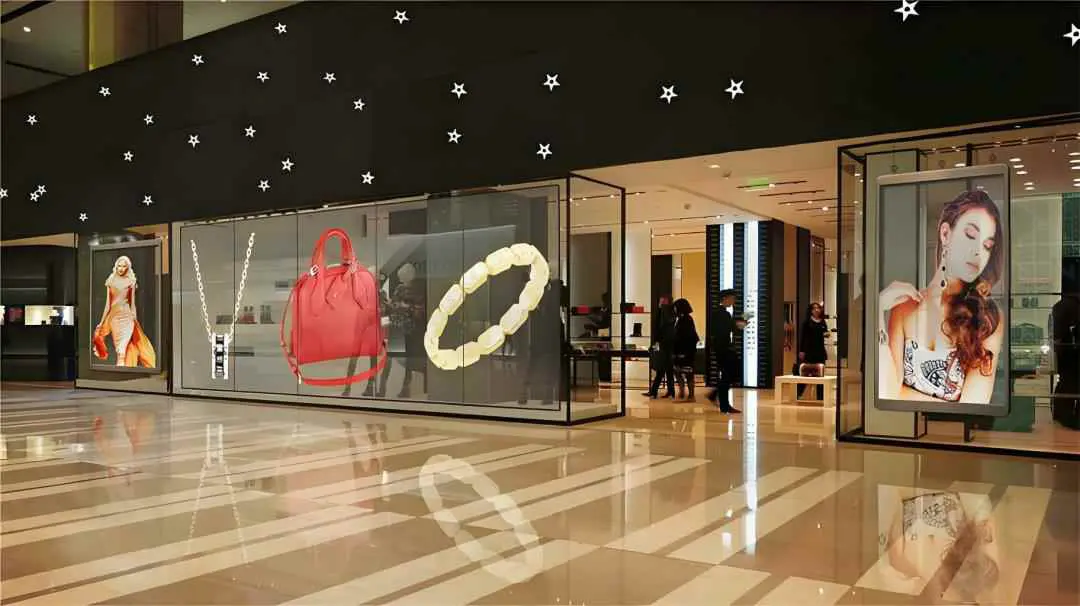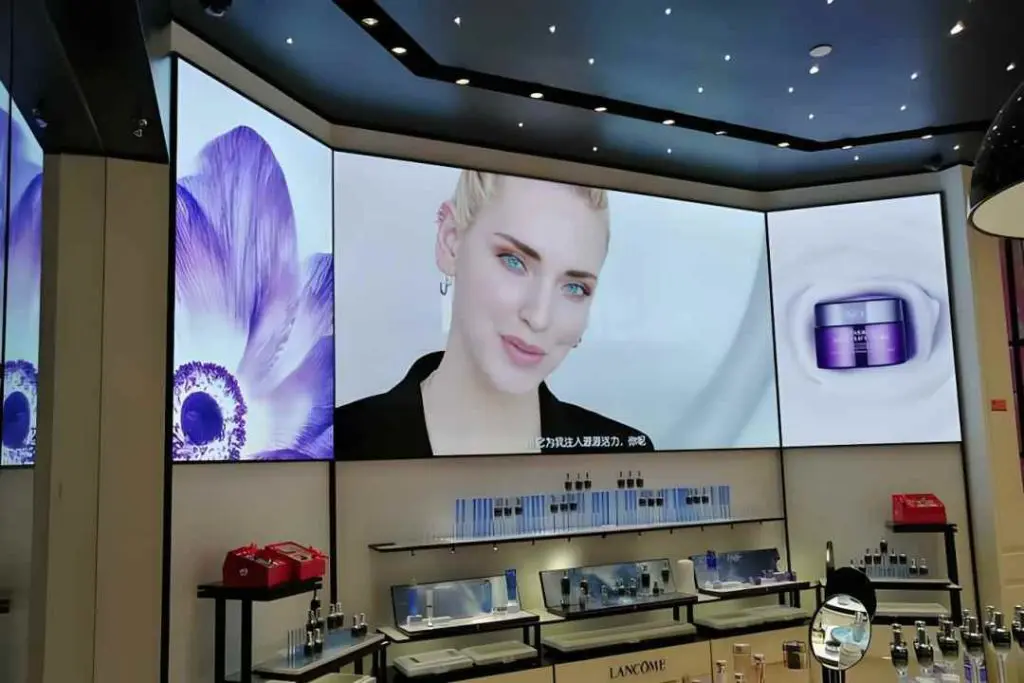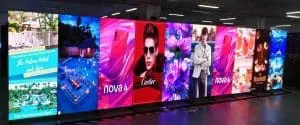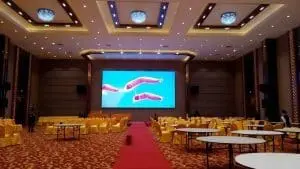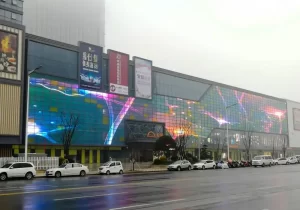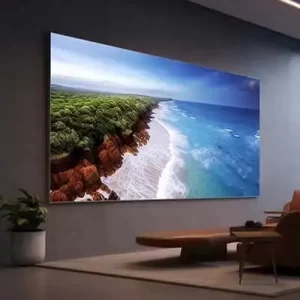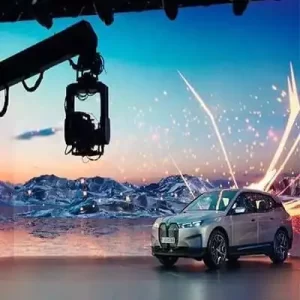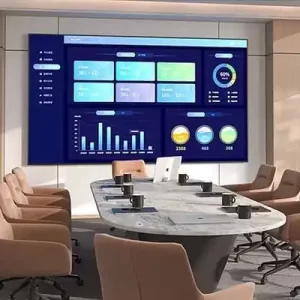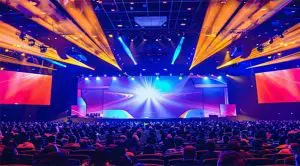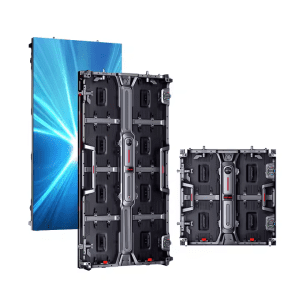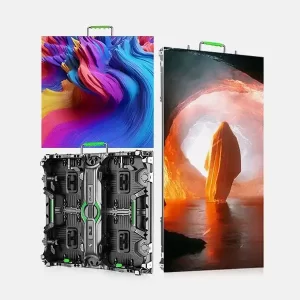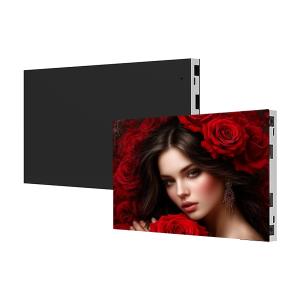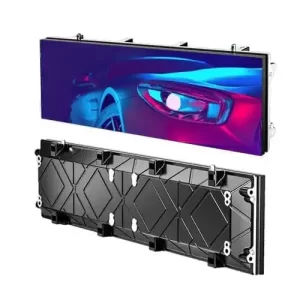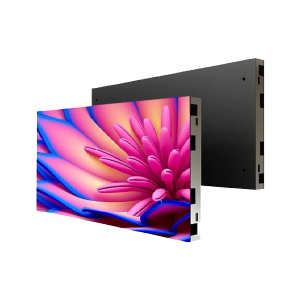An LED screen for a shopping mall is a high-quality digital display designed to provide vibrant visuals for advertising, entertainment, and information delivery. These screens enhance the shopping experience by captivating visitors with dynamic content, promoting brands, and sharing important announcements. LED screens are ideal for malls due to their high brightness, flexibility, and ability to seamlessly integrate into modern architectural designs.
In this guide, we’ll explore the features, benefits, applications, and considerations for choosing the right LED screen for shopping malls.
What Is an LED Screen for a Shopping Mall?
An LED screen for a shopping mall is a digital display that uses light-emitting diodes (LEDs) to present videos, images, and animations. These screens are installed in strategic locations within malls, such as entrances, atriums, food courts, and storefronts, to engage shoppers and enhance the overall ambiance.
Key Features of LED Display Screens for Shopping Malls
LED Display screens for malls are designed with advanced features to deliver impactful visuals and seamless functionality:
1. High Resolution
With pixel pitches ranging from P1.2 to P3, LED screens in malls offer sharp, detailed visuals that are ideal for close viewing distances.
2. High Brightness
LED screens provide 800–1,500 nits of brightness, ensuring clear visibility in well-lit indoor environments.
3. Seamless Design
Modern LED screens are bezel-free, offering smooth, uninterrupted visuals for large video walls or creative installations.
4. Wide Viewing Angles
With 160–180° horizontal and vertical viewing angles, LED screens ensure clear visuals from any position in the mall.
5. Customizable Shapes and Sizes
LED screens can be customized to fit unique locations and layouts, including curved, transparent, or floor-mounted displays.
6. Energy Efficiency
LED technology is energy-efficient, reducing power consumption while delivering bright visuals.
7. Real-Time Content Management
Brands and mall operators can update content instantly via Wi-Fi, cloud-based systems, or USB, ensuring timely messaging.
LED screens are built for durability, offering 50,000–100,000 hours of operation, even in high-traffic areas.
Benefits of LED Screens for Shopping Malls
LED screens provide numerous benefits for malls, enhancing both the shopping experience and business outcomes:
1. Captivating Advertising
Dynamic visuals and vibrant colors grab the attention of shoppers, making LED screens an effective platform for promoting brands, products, and sales.
2. Improved Customer Engagement
Interactive LED screens, such as touch-enabled displays, allow shoppers to explore products, locate stores, or participate in promotions.
3. Enhanced Mall Ambiance
Large LED screens in atriums or food courts can display artistic visuals, seasonal decorations, or live event broadcasts, creating a lively atmosphere.
4. Revenue Opportunities
Malls can rent screen space to advertisers, generating additional revenue streams from local and international brands.
5. Real-Time Communication
LED screens can be used to share real-time updates, including mall events, store openings, safety alerts, or emergency announcements.
6. Cost Efficiency
Compared to printed banners or posters, LED screens eliminate recurring printing costs and allow for rapid content updates, providing better ROI.
Applications of LED Display Screens in Shopping Malls
LED screens are versatile and can be used in various ways to enhance the shopping mall experience:
1. Entrance Displays
- Welcome visitors with promotional ads, brand logos, or seasonal greetings.
- Display mall directories or store highlights.
2. Atrium Video Walls
- Install massive LED walls in atriums to showcase advertisements or artistic visuals.
- Broadcast live events or holiday-themed content to create a captivating environment.
3. Storefront Displays
- Use high-resolution LED screens at storefronts to promote products, discounts, or new arrivals.
- Attract shoppers with eye-catching visuals and animations.
4. Food Court Screens
- Display menus, promotions, or entertainment content in food courts.
- Run advertisements for restaurants or cafes within the mall.
5. Interactive Kiosks
- Install touch-enabled LED screens to assist shoppers with store directories, mall maps, or product searches.
- Create interactive experiences for promotions or contests.
6. Transparent LED Screens
- Use transparent LED screens on glass facades or inside premium stores to showcase products while maintaining visibility through the display.
7. Event and Entertainment Displays
- Broadcast live events, fashion shows, or sports games on large LED screens in communal areas.
- Use LED displays for event branding or sponsor advertisements.
Types of LED Screens for Shopping Malls
Here are the most common types of LED screens used in malls:
1. LED Video Walls
- Best For: Atriums, entrances, or large advertising spaces.
- Features: Seamless, high-resolution displays for impactful visuals.
2. Interactive LED Screens
- Best For: Wayfinding kiosks, product search stations, or touch-enabled ads.
- Features: Touchscreen functionality for customer engagement.
3. Transparent LED Screens
- Best For: Storefronts, glass facades, or architectural designs.
- Features: Semi-transparent displays that blend with the environment.
4. Floor-Mounted LED Screens
- Best For: Creative installations or interactive experiences.
- Features: Durable, impact-resistant screens designed for foot traffic.
5. Curved LED Screens
- Best For: Unique and artistic installations in modern malls.
- Features: Flexible panels for concave or convex designs.
Factors to Consider When Choosing an LED Screen for a Shopping Mall
When selecting an LED screen for a mall, consider the following factors to ensure it meets your needs:
1. Pixel Pitch
The pixel pitch determines the screen’s resolution and viewing distance:
- P0.6–P2: Best for close viewing (e.g., storefronts or kiosks).
- P2–P3: Ideal for larger spaces like atriums.
2. Screen Size
Choose a screen size that fits the location and purpose:
- Small Screens: Suitable for kiosks or storefronts.
- Large Screens: Perfect for atriums, entrances, or video walls.
3. Brightness
Ensure the screen has adequate brightness for indoor environments:
- 800–1,500 nits is ideal for shopping mall displays.
4. Content Management
Look for displays with:
- Real-time content updates via Wi-Fi or cloud systems.
- Scheduling tools for automated playback.
5. Design and Integration
Ensure the screen blends seamlessly with the mall’s design and architecture. Consider options like transparent or curved displays for unique installations.
6. Warranty and Support
Choose a vendor that offers:
- A 3–5 year warranty.
- Post-sale support, including installation and maintenance.
Cost of LED Screens for Shopping Malls
The cost of an LED screen depends on its size, resolution, and additional features. Below is an approximate price range:
| Screen Type | Pixel Pitch | Cost per m² (USD) | Best For |
|---|---|---|---|
| LED Video Wall | P0.6–P3 | $1,000–$4,000 | Atriums, entrances, advertising. |
| Interactive LED Screen | P1.2–P2 | $1,000–$6,000 | Wayfinding kiosks, product search. |
| Transparent LED Screen | P3–P7 | $1,000–$7,000 | Storefronts, glass facades. |
| Curved LED Screen | P1.2–P3 | $1,500–$8,000 | Architectural and artistic displays. |
| Floor LED Screen | P3–P6 | $1,000–$7,000 | Creative and interactive spaces. |









